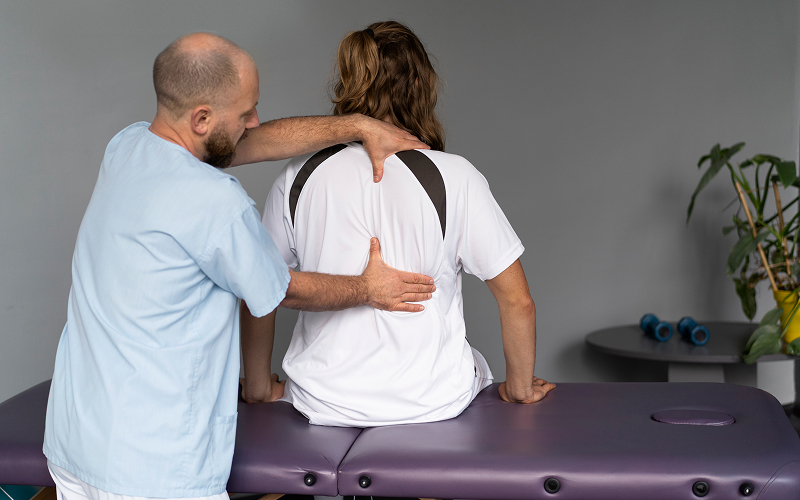A slipped disc occurs when the soft cushion between spinal bones bulges or ruptures, pressing on nearby nerves, causing pain, weakness, or numbness in different parts of the body, depending on where the disc is affected. Many people experience difficulty with daily activities, from bending to walking, due to discomfort. Slipped disc treatment is necessary not only to relieve symptoms but also to prevent further complications. Seeking help early from a spine specialist in Singapore ensures that the proper management strategies are applied.
What Are Options for Slipped Disc Treatment?
Treatment for a slipped disc often starts with conservative methods. Doctors recommend rest, medication, and physiotherapy to reduce pain and inflammation. Pain relief may include non-steroidal anti-inflammatory drugs, muscle relaxants, or targeted injections to calm irritated nerves. Physiotherapy is commonly prescribed to strengthen muscles around the spine, improve posture, and restore flexibility. These methods address both immediate symptoms and long-term spinal health.
In more severe cases where pain persists despite conservative care, doctors may consider surgical options. Surgeons use procedures such as discectomy or spinal fusion when nerve compression significantly impacts the quality of life. Surgery, however, is not the first choice. It is reserved for patients who do not respond to other treatments or who face nerve damage. Consulting a spine specialist in Singapore helps patients determine whether surgery is appropriate for their condition.
Lifestyle Adjustments to Support Healing
Managing a slipped disc does not stop at medical treatment. Lifestyle adjustments are equally crucial for sustained recovery. Maintaining a healthy weight reduces stress on the spine, while regular low-impact activities such as swimming or walking help keep muscles active without overstraining the back. Lifting objects with proper technique and avoiding long periods of sitting can prevent additional strain.
Patients are also encouraged to create supportive home environments. Using firm mattresses, ergonomic chairs, and proper work setups can minimise discomfort. Standing up regularly during long hours at a desk contributes to long-term spinal protection. By combining these adjustments with professional care, patients can manage symptoms effectively and prevent recurrence.
The Role of Rehabilitation in Recovery
Rehabilitation is crucial in slipped disc treatment. Even after pain subsides, patients need tailored exercises to strengthen their back and core muscles. This reduces the risk of recurrence and helps support spinal stability. Rehabilitation programmes usually include guided stretching, low-impact aerobic activity, and strength training tailored to the individual’s condition.
A spine specialist in Singapore may also work with physiotherapists to design customised recovery plans. These plans focus on gradual improvement, helping patients return to daily activities safely. Correcting sitting posture, using ergonomic furniture, and incorporating regular movement breaks are often recommended. Rehabilitation is not a one-time process but a long-term commitment to maintaining spinal health.
When to Seek Professional Help
Even though not all back pain indicates a slipped disc, a professional must still assess an individual with persistent or severe symptoms. Warning signs include numbness, weakness, or loss of bladder or bowel control, which require urgent medical attention. Consulting a spine specialist in Singapore ensures accurate diagnosis through physical examinations and imaging tests such as MRI scans. Early diagnosis allows treatment to start promptly, improving the chances of full recovery.
Professional consultation also prevents reliance on self-treatment methods that may worsen the condition. While rest and painkillers may provide temporary relief, they do not address the underlying problem. A structured approach guided by a specialist offers both immediate relief and long-term management.
Conclusion
Slipped disc treatment combines medical care, rehabilitation, and lifestyle changes to manage symptoms and support long-term spinal health. Consulting a spine specialist in Singapore ensures that patients receive an accurate diagnosis and guidance tailored to their condition. By committing to rehabilitation and adjusting daily routines, individuals can work towards a healthier back and improved quality of life.
Contact Achieve Spine & Orthopaedic Centre for guidance on slipped disc treatment and rehabilitation tailored to your needs.

